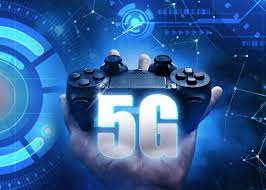Introduction
The synergy between 5G technology and virtual reality (VR) gaming is poised to redefine the gaming experience. As 5G networks continue to roll out globally, the implications for VR gaming are revolutionary, promising enhanced connectivity, immersive experiences, and a new era of multiplayer interactions.
Understanding 5G Technology
Before exploring its impact on VR gaming, it’s crucial to grasp the capabilities of 5G technology. The fifth generation of wireless technology is characterized by faster speeds, reduced latency, and the ability to connect an unprecedented number of devices simultaneously. These features form the foundation for the transformative influence of 5G on VR gaming.
Unleashing High-Speed Connectivity
One of the most significant contributions of 5G to VR gaming is the unparalleled speed it brings to data transfer. The near-instantaneous communication between devices and the network ensures that VR experiences are not only smoother but also more responsive. This addresses a critical challenge faced by earlier generations of wireless technology, where latency could impact the real-time nature of VR interactions.
Immersive VR Experiences Anytime, Anywhere
The combination of 5G and VR unlocks the potential for truly immersive experiences anywhere, without being tethered to a specific location. With high-speed, low-latency connectivity, VR gamers can explore virtual worlds with unprecedented freedom, whether at home, in public spaces, or even on the go. The elimination of spatial constraints enhances the flexibility and accessibility of VR gaming.
Multiplayer Interactions Redefined
5G’s impact on VR gaming extends to the realm of multiplayer interactions. The enhanced connectivity allows for seamless, real-time multiplayer experiences with users from around the globe. Whether engaging in cooperative missions or competitive gameplay, the low latency provided by 5G ensures that interactions are smooth and responsive, creating a more dynamic and engaging multiplayer environment.
Cloud-Based VR Gaming Services
5G facilitates the growth of cloud-based VR gaming services. With the high data transfer speeds of 5G, rendering and processing can be offloaded to powerful cloud servers, reducing the reliance on expensive VR hardware. This opens up opportunities for more users to access VR gaming without the need for high-end devices, democratizing the VR gaming experience.
Augmented Reality Enhancements
While primarily focused on VR, 5G also brings enhancements to augmented reality (AR) elements within games. The seamless integration of AR features, made possible by 5G’s capabilities, adds layers of interactivity and engagement to VR gaming. This combination creates a hybrid gaming experience that blurs the boundaries between the virtual and physical worlds.
Challenges and Considerations
Despite the promising impact, the integration of 5G and VR gaming comes with challenges. Network infrastructure, device compatibility, and potential data privacy concerns are factors that need careful consideration. Additionally, ensuring widespread accessibility to 5G networks is crucial to realizing the full potential of this technological synergy.
Conclusion
In conclusion, the impact of 5G on VR gaming is transformative, ushering in a new era of connectivity, accessibility, and interactivity. From high-speed connectivity to redefined multiplayer interactions and the growth of cloud-based services, the future prospects of VR gaming with 5G are exciting. As technology continues to advance, the boundaries of virtual worlds and gaming experiences will be pushed further, creating a dynamic landscape for VR enthusiasts worldwide.
